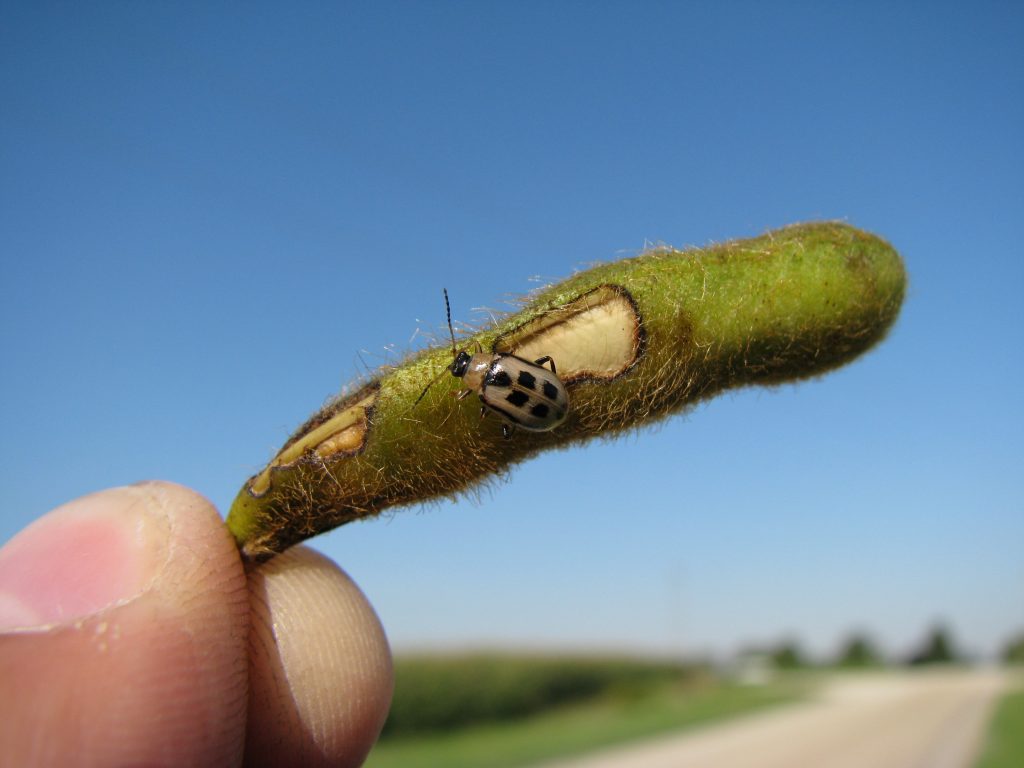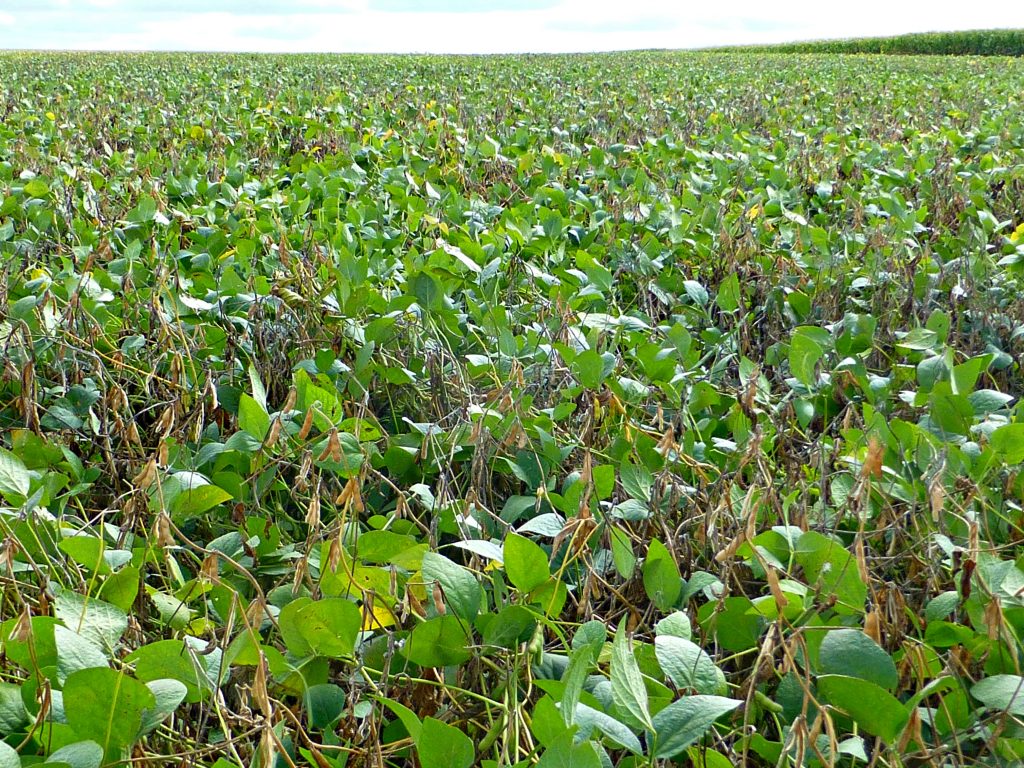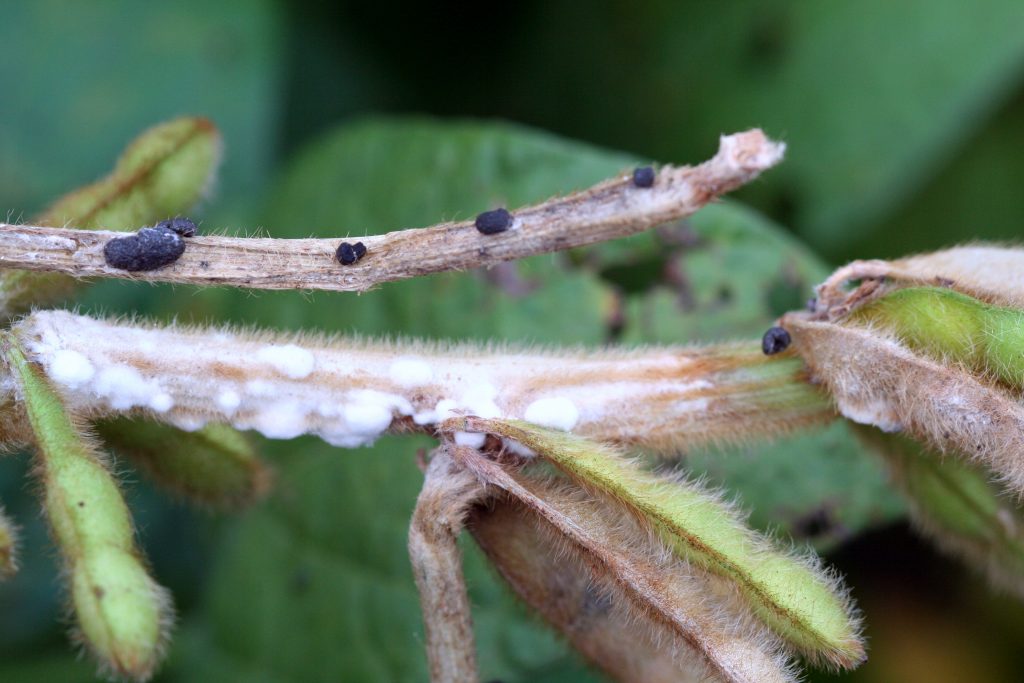With the delay in growing degree day accumulation and crop maturity, many fields are still in the ideal growth stages that put them at risk of some of our later season pests and diseases.
Western bean cutworm (WBC)
Peak moth flight for western bean cutworm has finally passed for all regions of the province. Central and eastern counties were the last to reach peak during the second week of August. Peak egg laying follows shortly after peak moth flight. Fields in central and eastern Ontario are also delayed. Fields in southern Ontario should be scouted for egg masses and larval activity. An insecticide application is warranted if thresholds are reached and there are still fresh silks present on the ears. Dry beans also should be scouted now that pods are present. WBC are difficult to scout for in dry beans, therefore focus on looking for their pod feeding instead. If small holes are easy to find in a field, a spray application can effectively control the larvae and reduce the risk of reduced seed quality and picks caused by WBC. For more information on scouting and thresholds, go to www.cornpest.ca.
Bean leaf beetle (BLB)
First generation adults are a concern in food grade, Identity Preserved (IP), seed soybeans and edible beans across Ontario this time of year. Bean leaf beetle can cause defoliation but rarely does leaf feeding reach threshold and impact yield. The real risk is the pod feeding they can do, as the holes open the pods up to the development of pod diseases, impacting seed quality (Fig. 1). BLB can directly impact yield by clipping pods off of the plants. Food grade, IP, seed soybean and dry bean fields in the R4 to early R6 stages should be assessed for pod damage and clipping. If 10% of the soybean pods inspected within a field have feeding injury, a spray is warranted. With the higher value and stringent quality standards in dry edible beans, if 5%–8% of the pods inspected have feeding scars, control may be necessary. If pods are being clipped and found on the ground, an application is also warranted. Ensure that adults are still presently active in the field before a spray is applied and consider pre-harvest harvest intervals before making a spray decision.

Soybean aphids (SBA)
Soybean aphids are reaching thresholds in some fields, particularly in eastern Ontario. The milder weather is ideal for aphid development, though hopefully with the dewy mornings, some entomopathogens will start to develop. Fields are at risk until the early R6 stage of soybeans when more aphids are needed before control is warranted and pre-harvest intervals become a concern. The threshold for soybean aphids is 250 aphids per plant and actively increasing on 80% of the plants from the R1 up to and including the R5 stage of soybeans. Natural enemies play a big role in taking soybean aphids down below threshold, especially when aphid populations hover close to the threshold. The free Aphid Advisor app at www.aphidapp.com, can help you make a spray decision. Enter the number of aphids per plant, as well as the various natural enemies observed in each field. The app will take into consideration the potential population growth rate of the aphids based on the weather forecast for your location, and compare it with the potential number of aphids that the current natural enemy population can consume and decide if they are able to keep the aphids below threshold or whether a spray is necessary.
White mould
White mould symptoms are showing up in many soybean and dry edible bean fields in the province (Fig. 2 & 3). It is still early to assess the impact that infection can have on yield but research has shown fungicide applications beyond the R4 soybean stage do not limit further disease development. In addition to causing yield loss, white mould can affect seed quality and seed production. Taking accurate notes about where and how much white mould occurs in each soybean field is important for future disease management planning. Tracking disease levels across years also will help determine the potential sclerotia (inoculum) load that may be present in a particular field. Recording disease and yield performance for different varieties will help in future variety selection for fields with a history of white mould.
For more information on white mould and other soybean/corn diseases refer to the Crop Protection Network (cropprotectionnetwork.org) publications on the GFO website at http://gfo.ca/Production/Production-Resources.
For more information on the control options available for these pests and diseases, refer to the Field Crop Protection Guide at: http://www.omafra.gov.on.ca/english/crops/pub812/p812toc.html


Table 1. August 16-22, 2017 Weather data
